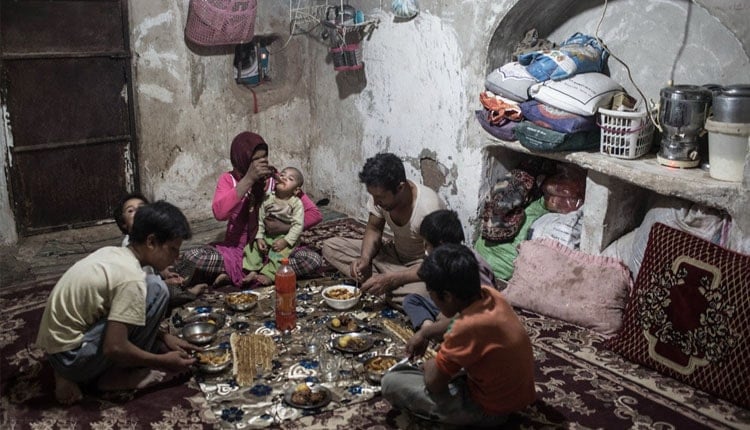
The rising currency exchange rate in Iran and the subsequent high inflation and liquidity rate, due to the regime’s corruption and wrong economic policies, have increased pressure on Iranian society.
While the Iranian people are suffering from poverty and their food baskets have shrunk, the regime, instead of helping them, continues wasting Iranian resources on its nuclear program. According to a leaked report of the International Atomic Energy Agency (IAEA), “Tehran’s stockpile of enriched uranium has risen further.”
In addition, the state-run Arman daily on Sunday wrote: “What happened to the missing oil rigs? Where did they end up? Where did the $18 billion that Erdogan said, in his parliament, that ‘came from Iran and God sent it to us’ come from? After all, there are those who are aware of these issues. Now they say that a specific amount of currency has gone and not returned; when they know this information, why don’t they follow it up? They have the information on so many issues, yet they take no action. They control the situation, and what we do know is that the authorities are aware of it, but they do not seem to want to say anything about it.”
All the while, the regime’s economic experts estimate that “between 2005 and 2019, Iranian people’s food baskets have shrunk by 30%.” (State-run Setareh Sobh daily, September 8, 2020)
In 2018, while the dollar exchange rate in the Iranian market was around 160,000 rials and had not reached the current exchange rate of 240,000 rials, the Iranian people’s purchasing power had been reduced by 80 percent. Naturally, people’s purchasing power has decreased considerably since then.
In this regard, the state-run Etemad daily on Monday wrote: “In recent years, the weakening of household purchasing power has intensified so much that occasional declines in inflation have not been able to affect the household food basket and the shrinking of their shopping basket, especially for food items. Field observations show that many households buy less food now than they did in the past. Meat consumption per capita by people has decreased from 6.8 kg in 2016 to 5.4 kg in 2018. Meanwhile, some unofficial reports indicate that many families do not have the means to purchase any type of meat.”
In the current situation, in addition to meat and poultry and many dairy products that have been removed from the table of the majority of people, fruits have also been, and continue to be, removed from people’s tables.
In this regard, the state-run Khabar-e Fouri website, on August 12, wrote: “We removed meat and poultry from people’s tables and now it’s time for fruits and vegetables to be removed. You cannot live with water. The body needs protein and vitamins.”
Regarding the regime’s inaction in resolving people’s issues, the state-run Ebtekar daily on Tuesday wrote: “What people only see and hear is criticism [by the officials], and that’s all. Alas that there is not even the slightest solution that offers a logical and real initiative to overcome the problems of the people and the country. People suffer from the instability of living, health, jobs, and housing expenses, and their uncertain future. It is not enough to be a critic alone; people can do that. It is important to gain the people’s trust that has been damaged and the urgent need to rebuild it.”
This so-called damaged trust will not be restored, particularly following the nationwide Iran protests and the regime’s subsequent killing of 1500 protesters, economic crisis, and the regime’s mismanagement of the COVID-19 crisis, such as reopening schools or holding university entrance exams.
As the state-run Ebtekar daily on September 6 wrote: “It seems that Hassan Rouhani, for obvious and hidden reasons, has distanced himself from society and people as much as he could. But neither he nor his advisors notice that this behavior is the final nail in the coffin of the people’s trust. They do not understand, or they ignore, the devastating consequences of this action. It is good for the president’s all security entourage to remember that since November 2019 until now what strange things have happened in our society.”
Despite the regime’s effort to blame sanctions for Iran’s economic crisis, the state-run media identify the regime’s failed economic structure as the main reason for the Iranian economy’s freefall. In an article published on August 27, the state-run Mardomsalari daily wrote: “Today we have an extremely failed and fallen economy. The main reason is the currency shock and the plundering of the economy by semi-private companies and banks. Sanctions have become an excuse for some people to plunder the country. We suffer from both foreign and domestic sanctions and those who profit from this situation.”
But what will be the outcome for the regime?
In this regard, Mohammad-Reza Mortazavi, one of the regime’s officials, told the state-run Etemad Online: “This social hatred that has engulfed the middle class is one of the factors hindering prosperity in the country. This hatred will turn into resentment. I remember the first days of the revolution. Some people were running into houses, confiscating those houses. I see that day, and it is crystal clear to me that those days are coming back. As someone who knows and looks at society, I see that this hatred is growing and [will turn into a revolution] and explode.”



